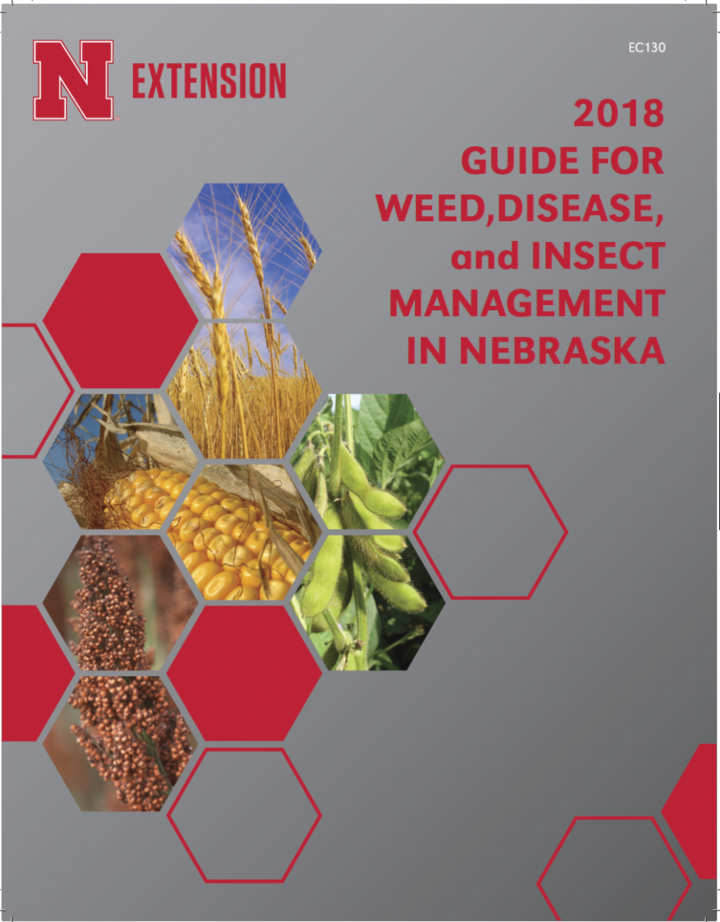The 2018 Guide for Weed, Disease, and Insect Management in Nebraska (EC130) is now available at Marketplace.unl.edu.

This 332-page guide offers a single, comprehensive resource for your pest management challenges. It is written by Nebraska Extension specialists in agronomy and weed science, plant pathology and entomology, who offer pesticide rate, efficacy, and application notes based on Nebraska conditions and research. It also offers a range of tools to aid in pest management, from a guide to herbicide classifications to an applicator nozzle and spray droplet classification to photo guides of common diseases, insects, and weeds.
- What crop growth stage is this? Check plant illustrations for corn, soybean, alfalfa, wheat, sugarbeet and sorghum growth stages.
- How can you spray a field to prevent chemical drift and reduce neighboring crop injury? Check the illustrated guide to field patterns and nozzle settings.
- What are the rotation restrictions for the herbicides you applied last season? Check the 12-page table for about 300 herbicides and 22 rotational crops.
- When are you likely to see which weeds? Check the weed emergence table.
“Information in the guide can be an important resource for growers battling resistant weed populations," said Stevan Knezevic, Nebraska Extension weed specialist and senior editor of the guide. "Nebraska now has six weed species that are resistant to glyphosate and two that are resistant to HPPD inhibitors."
Knezevic recommended that growers with resistant weeds use the Herbicide Mode of Action chart in the guide to identify the site of action of the herbicide they’re considering and then relate that information to the site of action column in the herbicide efficacy tables for each crop, the first column in the table.
“Understanding the Mode and Site of Action Groups is critical to selecting herbicides that will be most effective in your integrated pest management plan,” he said.
“This year we added separate herbicide efficacy ratings for glyphosate-resistant Palmer amaranth, a growing challenge in Nebraska corn and soybean. We previously bundled Palmer weed responses with waterhemp, but realized that as palmer resistance evolved, our efficacy data needed to reflect that.”
Updates based on product changes and Nebraska research have been made throughout the guide. The Insect Management section, which also includes a mode of action guide, now includes information for grain sorghum as well as corn, soybeans, wheat, and alfalfa. The Plant Disease Management section, which also details fungicide modes of action, now includes information on biological products for pest control. In addition each section (weed, disease, and insect) includes "dictionaries" of product trade names, active ingredients, use, site of action, company, and EPA registration number.
Extension specialists leading the section development teams were Knezevic, weeds; Robert Wright, Extension entomologist, insect management; and Tamra Jackson-Ziems, Extension plant pathologist, plant disease management.
To Order
The cost for either format — printed or downloadable PDF — is $15. Copies can be ordered from Marketplace.unl.edu
